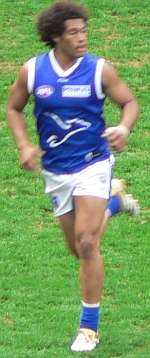Irish immigration to Barbados
| ||||
| Languages | ||||
|---|---|---|---|---|
| Barbadian English, Bajan Creole | ||||
| Religion | ||||
| Christianity | ||||
| Related ethnic groups | ||||
| Afro-Barbadian, English people | ||||
Irish immigration to Barbados dates back to the seventeenth century, when Irish people began arriving on the island as indentured servants of the British planters. Many Irish rebels, Catholics and "stubborn" landowners and tenants were forced into indentured servitude in the English colonies in the Caribbean, Bermuda, and North America. The number of Irish laborers that were in Barbados is unknown but the figure is estimated at between 12,000 and 60,000 people.[1]
History
The Irish, many of whom were prisoners of war or civilians, deported from Ireland following the Cromwellian invasion, arrived in Barbados alongside African slaves. English lords had used coerced or forced emigration as a way of pacifying Ireland since the start of the century, but the Cromwellian invasion greatly increased Irish emigration.
Unlike English and Scottish indentured servants, the majority of labour undertaken by the Irish was slave labour, and their circumstances were "much worse than those of the indentured workers who travelled at the same time and later, not least because indentured work, though often harsh, was voluntary and time-limited." [2] In 1649, due to the harshness of the servitude to which they had been subjected, the Irish joined with the Africans in rebellion against the English colonists.[1] In response to the rebellion, many were hanged, drawn-and-quartered and their heads deposited on pikes on high ground where the entire population of Bridgetown would see them as a warning against future rebellions. Despite this, attacks by Spanish and French pirates, as well as the loss of crops due to climatic shocks, led to further black and Irish revolts against the English. Rebellions increased the fear felt by white slave owners of the Africans, whom they perceived as savages.[1]
In the 1660s, some 52,000 Irish laborers, mostly women and sturdy boys and girls, were delivered to Barbados and Virginia alone.
However, although African slavery in Barbados remained until 1834, Irish servitude seems to have disappeared over time. The 1880 census identified no Barbadian as Irish.[1]
Demography
Currently, Barbadian descendants of the Irish are called redlegs. This community has been endogamous, and now numbers only about four hundred people. Most live in poverty and are prey to infections and diseases. Often, they have a poor diet and lack of dental care. Furthermore, hemophilia caused diseases and premature deaths in the community, and excess sugar foods consumed by the community has aroused a high rate of diabetes, which has extended blindness among many them. Moreover, school absenteeism, poor health, the mixture between members of the same family (which causes severe disease in their descendants) and the poverty of the community, reinforced by the possession of small land, shortage of employment opportunities and maintenance of large families (and therefore greater food shortages for each of its members), have adversely affected their presence on the island. Today, redlegs are characterized by anomalies and difficulties to survive on the island.
Only since the latter half of the twentieth century has the community begun to integrate and assimilate with the black people of Barbados, most on the island.[3]
See also
- White Barbadian
- Barbadian people
- Irish immigration to Saint Kitts and Nevis
- Irish people in Jamaica
- Redlegs
.png)

